The first use of timber for building bridges probably emerged when someone decided to place a log over a stream to cross over. However, the 1830s boom in the development of the railroad started a new era in the building of rail bridges and pushed the engineers to create towering wooden bridges that have become synonymous with that era.
These towering timber trestles are considered the only railroad related technology that wasn’t developed in Europe.
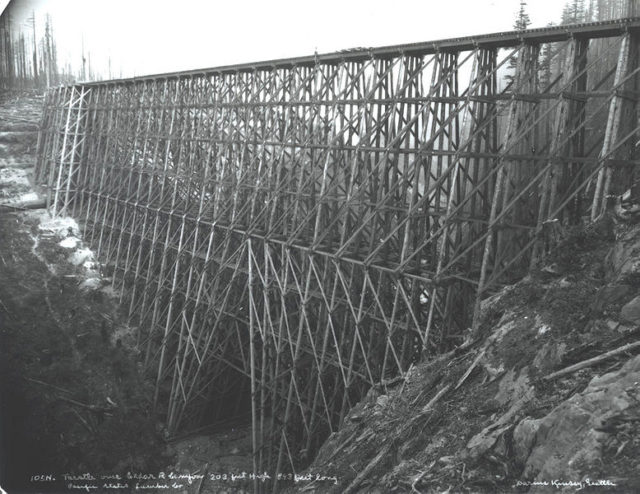
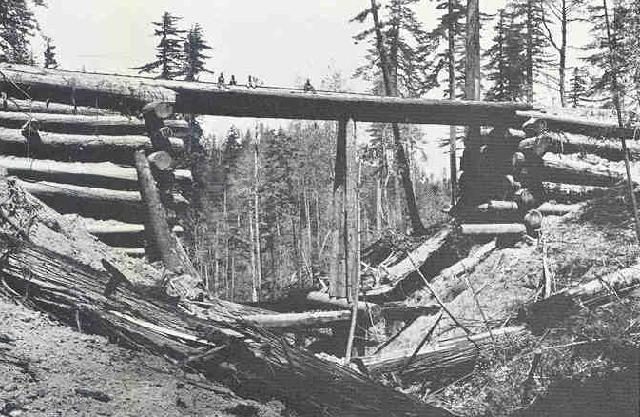
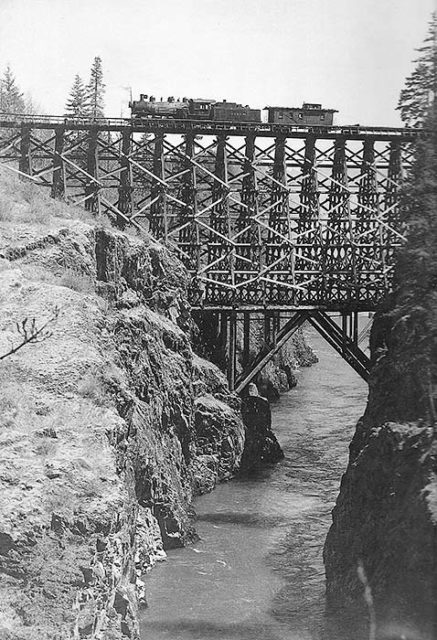
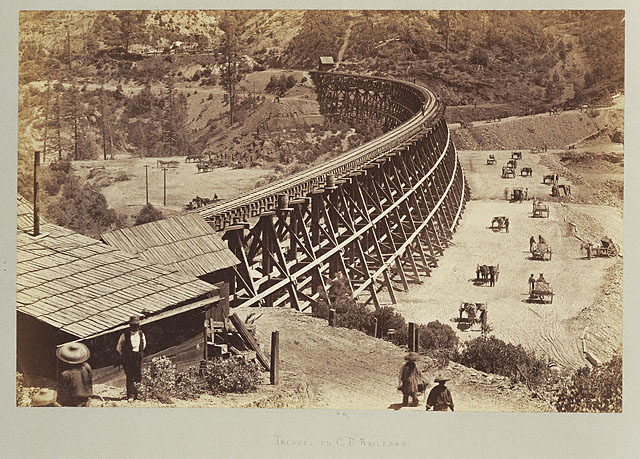


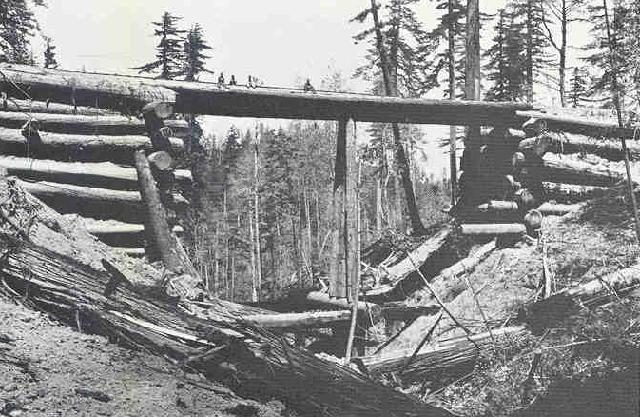
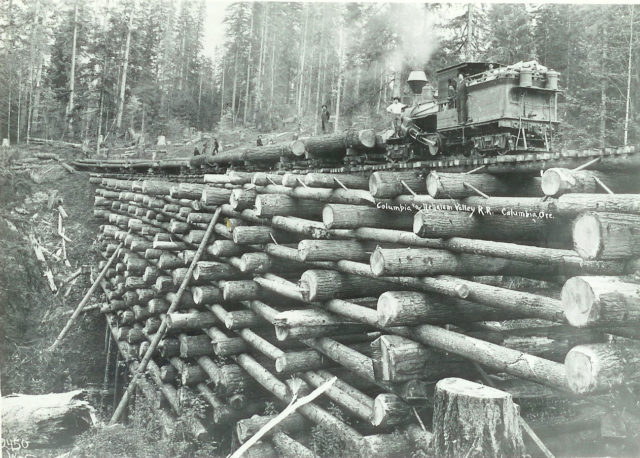
![Bridge on Orange & Alexandria [Virginia] Railroad, as repaired by army engineers under Colonel Herman Haupt](https://www.thevintagenews.com/wp-content/uploads/sites/65/2016/11/111-640x491.jpg)
These timber trestles were generally built in two designs with distinct features and functionality.
The most common of the pair was known as the Pile Trestle, which consisted of bents spaced 12 to 16 feet apart.
Each of these bents consisted of some three to five timber poles which were pounded straight down the ground using a pile driver. To create better stability, the outer posts were usually battered creating an angle outwards.
The top of the posts which were uneven were usually cut to level with the cap during the construction, which in turn provided the support for the stringers and planks that held the weight of the rail.
For the taller timber trestle, the bent framed was used, the frame bents usually used the timber that was square, unlike pile bents, and sub sills or mud sills often acted as the foundation of the structure.
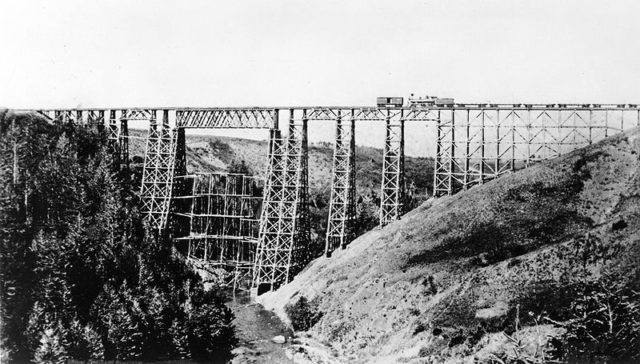
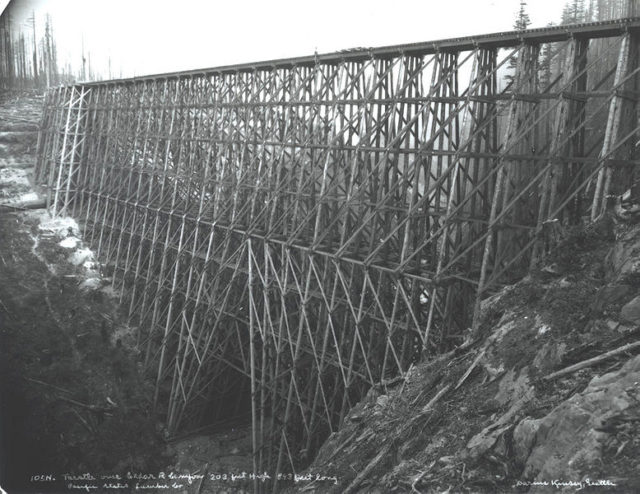
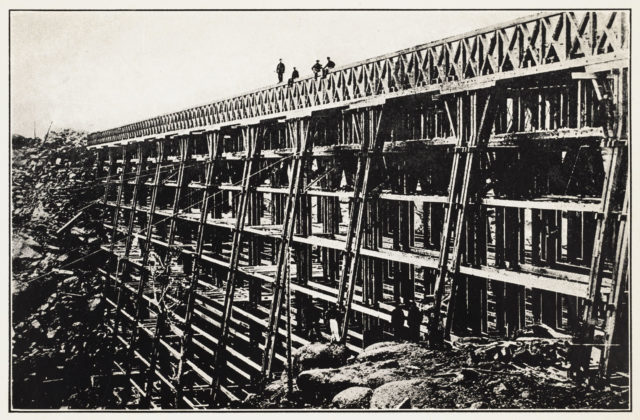
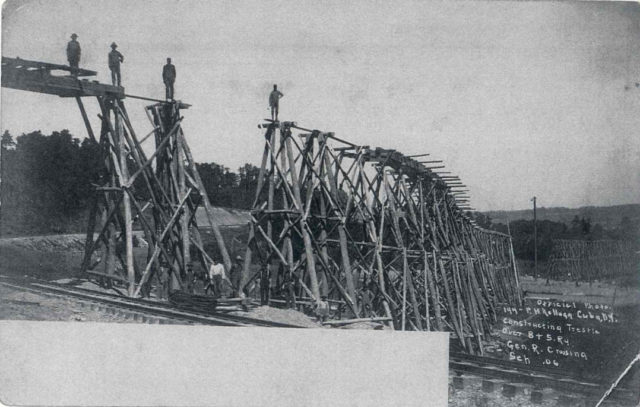
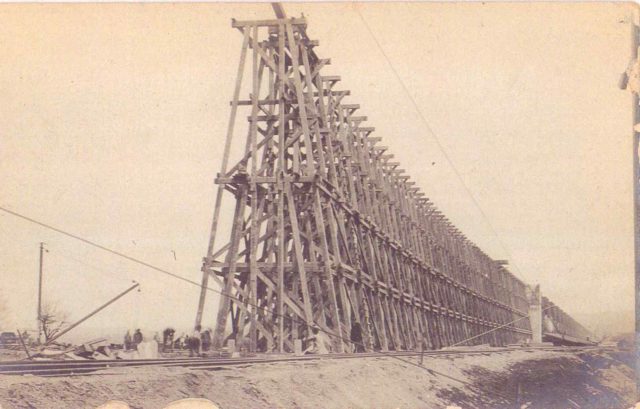
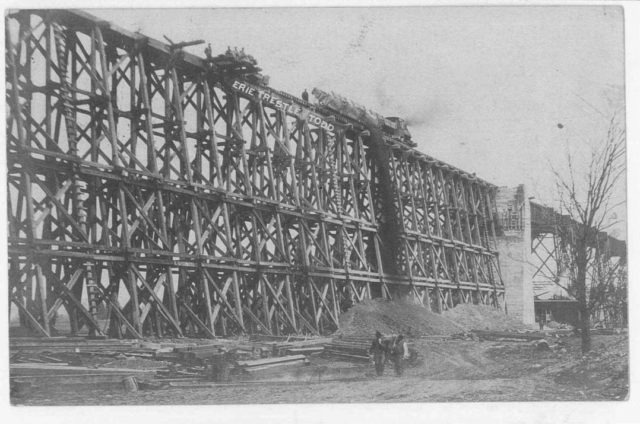


These frame bents were built in the form of stories that were usually between ten to fifteen feet high. In the case of the extremely tall trestles, the individual sections of the bent were built flat on the ground as a single or double storey and were then lifted up on a high line where it was then lowered and fitted on the rising structure, the process was then repeated for the next level.
At the peak of the timber bridge construction a total of a dozen tall timber bridges was built, none of which exist anymore. Most of these highest bridges were built to enable transportation of log and were constructed in the Washington state in the US and on Vancouver Island in British Columbia, Canada.
The sad aspect of these bridges was that the logging companies often considered these bridges as a mean of sucking out the timber from a thickly forested region, once the lumber was all transported out the bridges were abandoned without any remorse.
These timber bridges were built from lumber as it was readily available and highly inexpensive as compared to steel, however, the bridges came with a number of drawbacks.
The continuous transportation made these bridges weaker over time and prone to fire – they were made from wood, after all. The bridges over time became weak and often the workers were seen hopping off the train once approaching the weak wooden bridges only to run back and then ride it after the bridge was crossed.
